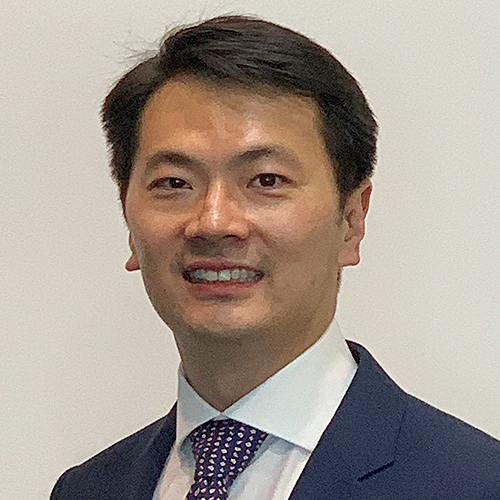Interest payments by the world’s largest listed companies surged by a quarter (24.4%) in 2023-24, paying banks and bondholders a record US$458 billion in total, up by US$89 billion from the previous year, a new report finds.
Amid the higher interest rates, debt service costs rose to record levels in every country and every sector, according to Janus Henderson’s latest annual Global Corporate Debt Index.
“The sharp increase in the amount companies spent on interest in the past year marks a sea change in corporate finances. The trend is evident everywhere but it’s important to remember debt servicing costs are coming from a historically low base so this is a process of normalization,” says Tim Winstone, portfolio manager, corporate credit team, at Janus Henderson.
And even if central banks start bringing down their policy rates this year, the firm expects interest bills to continue rising for the time being as old debts mature and are refinanced at higher rates.
“On the whole, companies are absorbing these higher interest costs with little difficulty, though the impact is greater for smaller firms that often face a refinancing cliff edge, than for larger ones that typically have a range of maturities for their debts and so see a more gradual shift to higher interest bills,” Winstone says.
“We are optimistic for the year ahead. Economies have weathered higher rates well and seem to be landing relatively softly. As the rate cycle finally turns downwards, bonds will perform well as yields fall, driving capital returns for investors.”
During the year, top listed companies took on US$378 billion of net new borrowing, pushing the total up 4.9% to a record US$8.18 trillion. This increase was, however, significantly lower than in the previous year and was also well below 2018 and 2019 (2020 and 2021 saw borrowing patterns disrupted by the pandemic). Higher interest rates have clearly been a factor in moderating appetite to borrow over the last year.
Takeovers were the major driver of the increase in corporate net borrowing. Big deals in the healthcare sector alone accounted almost a third of the rise, including Pfizer’s purchase of Seagen. Across all sectors, Janus Henderson estimates that takeovers net of disposals accounted for around half of the increase in global net borrowing during the year.
The asset manager expects global borrowing levels to continue to rise in 2024-25 but at an even slower pace, up by 2.5% to a record US$8.38 trillion.
Divergent debt levels in Asia
According to the report, corporate debt levels across Asian companies diverged in 2023-24 as they navigated economic headwinds. Hong Kong, China, and Taiwan saw net debt levels decline as strong profits and cash flows allowed firms to deleverage. Singapore's borrowing was flat as debt increases and decreases offset each other.
In contrast, South Korea and Japan experienced rises in net corporate debt, driven by working capital needs, acquisitions, and shareholder returns. Australia's borrowing surged due to a major acquisition and elevated dividend payments exceeding cash generation. Rising interest rates put upward pressure on debt servicing costs across the region, with Japan seeing the sharpest spike from the end of ultra-low rates.
In Hong Kong, net debts fell by 12.3% to US$55 billion as a significant majority of companies reduced their borrowings during the year. The largest contributions came from Li Auto, which turned profitable and improved its working capital position significantly, and Xiaomi, whose surging profits drove strong cash flow. However, China Energy Engineering spent far more on investment than it earned and borrowed the difference. Interest costs rose by just 13.4% as higher rates were offset by lower borrowing.
Like in Hong Kong, company debts in mainland China fell by 4.1% to US$179 billion during the year at constant exchange rates. Strong cash flows from companies as diverse as Alibaba, Tencent, PetroChina, and Amperex contributed the most to the trend. A small majority of companies in China repaid borrowings in the year compared to those that increased them. Interest costs rose by 21.4%.
The majority of listed companies in Taiwan have no debt, and most of these added to their net cash positions during the year, especially Hon Hai Precision. At the other end of the scale, a 97% fall in operating cash flow at shipping group Evergreen Marine, combined with higher investment and large dividends, meant it borrowed significantly more. Taken together, the corporate net cash position was broadly unchanged year-on-year.
Changing patterns
Corporate borrowing in Singapore was broadly flat (+1.3%) at US$43 billion as higher borrowings at Jardine Matheson to fund dividends and share buybacks were offset by debt repayments at food group Wilmar on the back of much-improved working capital. Interest costs in Singapore rose by 29.1%.
Companies in South Korea swung from a collective net cash position in 2022/23 to a net debt position in 2023/24. This was driven primarily by Samsung, whose net cash pile fell by a fifth owing to sharply lower profits, and Hyundai, which required significantly more working capital to fund higher sales. Hyundai also paid a record dividend and pushed capex higher.
Australia saw a 59.9% increase in net borrowing to US$74 billion, mainly due to CSL’s acquisition of Vifor and BHP, whose dividends exceeded free cash flow significantly. Other companies made a much smaller contribution. Interest costs rose by 24.5% but are likely to rise more sharply in the current financial year to reflect higher debt levels. (Australia’s June financial year-end means the data is several months older than elsewhere.)
In Japan, companies saw their net borrowings rise by 7.3% to US$612 billion. Toyota, Honda, and Nissan accounted for the largest portion of this increase, mainly related to car-financing operations, while Astellas Pharma took part in the industry consolidation wave, buying Iveric with borrowed capital. However, the majority of listed companies reduced their debts, with Hitachi making the largest contribution as free cash flow far exceeded dividends and share buybacks. The end of near-zero interest rates meant interest costs in Japan jumped by 38.6% during the year.








